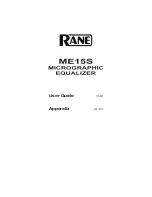
What followed next was the innovation that brought the use of eq into the
mainstream, known as active equalization. ‘Active equalization’ allowed an eq
to be patched into a mixing desk for the first time without the fear of ‘insertion
loss’, added noise, or loss of fidelity. finally, eq could be performed risk-free.
most analog equalizers manufactured today use some form of solid state
electronics to apply their boosts or makeup gain. The earliest incarnations of
these equalizers, however, used vacuum tubes, along with large input and output
transformers, as required by most high voltage tube circuits. This type of design
imparts a ‘sweet’ character that many modern designs fail to reproduce. Though
many modern eq’s have a generous amount of features, few offer the warmth
and richness, or the natural and forgiving qualities of the classic designs.
in the early days of recording, distance mic recording was more common
than close-mic technique. large rooms tend to ‘even out’ a soundstage,
eliminating the need for much of the corrective eq used in modern production.
As close mic recording became the the accepted norm for superior track
isolation, the need for equalization became much more apparent to recording
engineers. early studios began to utilize what many termed the ‘Tamla/
motown’ technique (named after the famous record label and studio), whereby
an instrument or voice is ‘manipulated’ to some degree via equalization
in order to sit well within the context of a mix. Today, this is a nearly
inseparable part of the art and science of modern music production.
8
enGLiSh
Now Let’s get started
warraNty
techNicaL specs
a Bit of history
waxiNg phiLosophicaL
hookup diagrams
recaLL sheets


































